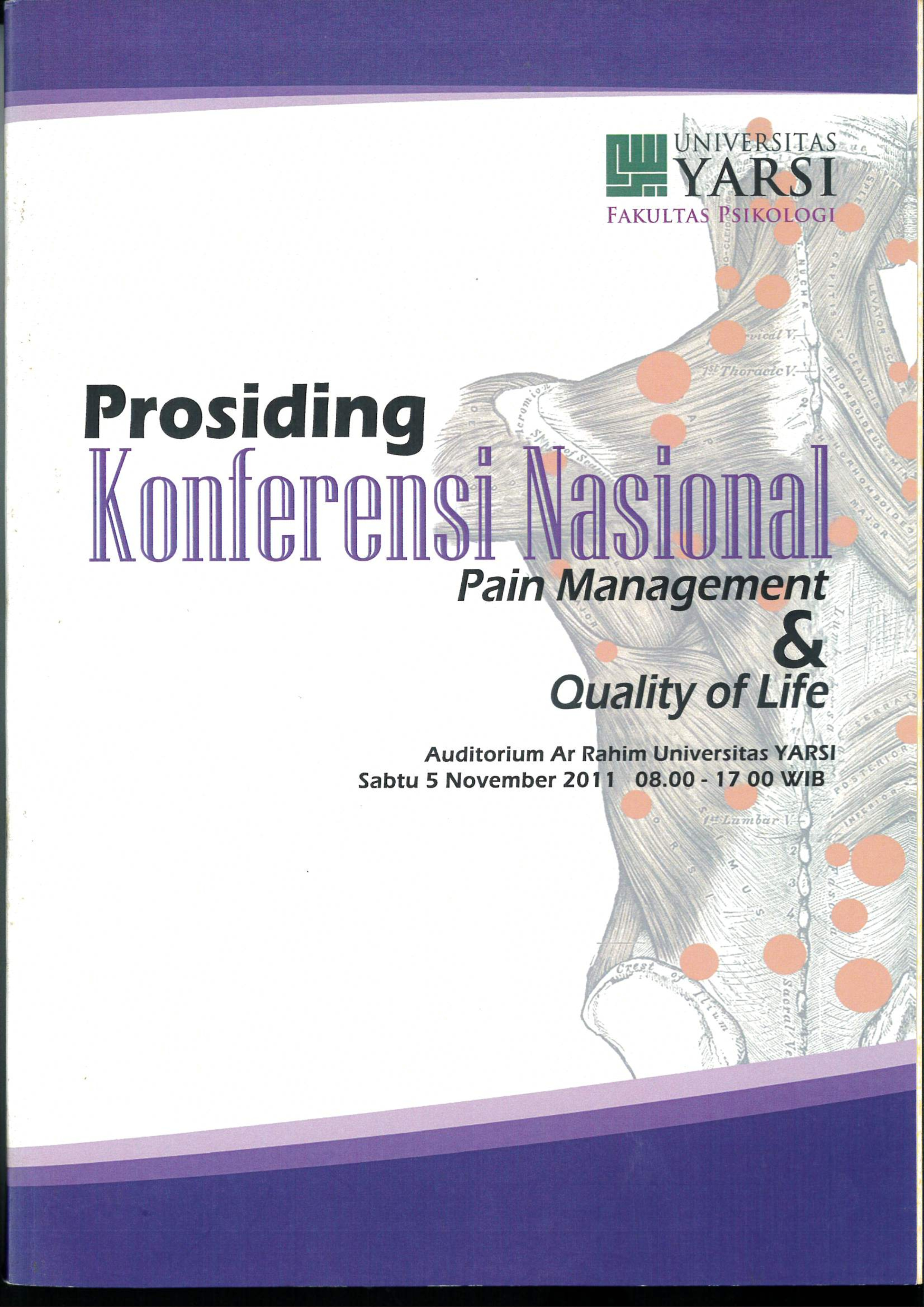Melibatkan Keluarga dalam Program Manajemen Nyeri pada Pasien dengan Nyeri Kronis
Keywords:
Nyeri, keluarga pasien, management nyeriAbstract
Nyeri merupakan pengalaman psikologis, bahkan merupakan alasan paling umum bagi seseorang untuk mencari perawatan medis. Sekitar 80 persen kunjungan ke dokter karena alasan nyeri. Lebih dari 30 tahun, pendekatan psikologi telah digunakan dalam asesmen maupun tritmen sindrom nyeri kronis, namun bukan yang menyebabkan kematian seperti low back pain kronis, tension headache dan migraine headache. Baru akhir-akhir ini psikolog mulai mengeksplorasi kegunaan pendekatan psikologi pada kondisi nyeri menetap akibat penyakit yang terus berkembang seperti kanker, arthritis dan sickle cell diseases. Keluarga pasien, selain menerima dampak sakitnya pasien, juga bisa berperan dalam meringankan sakit pasien. Oleh karena itu, program manajemen nyeri biasanya melibatkan keluarga pasien. Disisi lain, pasien nyeri kronis seringkali menarik diri dari keluarga, dan upaya keluarga bertindak suportif justru kontraproduktif. Makalah ini akan membahas bagaimana peran keluarga dalam manajemen nyeri pada pasien dengan nyeri kronis/menetap.
References
Alioto, J.T. Behavioral Treatment of Reflex Sympathetic Dystrophy. Psychosomatics. 1981;22:539-540.
Barowsky EI, Zweig JB, Moskowitz J. Thermal biofeedback in the treatment of symptoms associated with reflex sympathetic dystrophy. J Child Neurol. 1987;2:229-232.
Dureja, G.P. (2006). Chronic Pain Management : (Non Pharmacological Methods). Indian J Anaest; 50 (5): 397-407
Dolan, Canavan and Pinkerton, Family Support. http://www.childandfamilyresearch.ie/family-support, 12 oktober 2011)
Given, B.A., Given, W.C., and Kozachik, S. family Support In Advanced Cancer. A Cancer Journal for Clinician. Vol 51, Number 4, p 213-231.
Hadjistavropoulos, T and Craigh, K.D. (2004). Pain : Psychological Perspective. New Jersey : Lawrence Erlbaum Associates Publisher
Oerlemans HM, Oostendorp RA, de Boo T, Goris RJ. Pain and reduced mobility in complex regional pain syndrome I: outcome of a prospective randomized controlled clinical trial of adjuvant physical therapy versus occupational therapy. Pain. 1999;83:77-83.
Oerlemans HM, Oostendorp RA, de Boo T, van der Laan L, Severens JL, Goris JA. Adjuvant physical therapy versus occupational therapy in patients with reflex sympathetic dystrophy/complex regional pain syndrome type I. Arch Phys Med Rehabil. 2000;81:49-56.
Ospina, M and Harstall, C. (2002). Prevalence of Chronic Pain: An Overview. Ebook. Health Technology Assessment, Alberta Heritage Foundation for Medical Research. Alberta Canada
Rawal, R; De Andrés, J; Narchi, P; Singelyn,F.J; Fischer, H.B.J; Stienstra, R; Ivani, G; Wulf, H & Mogensen, T (tanpa tahun). Postoperative Pain Management –Good Clinical Practice : General recommendations and principles for successful pain management. Ebook. The European Society of Regional Anaesthesia and Pain Therapy
Sherry DD, Wallace CA, Kelley C, Kidder M, Sapp L. Short- and long-term outcomes of children with complex regional pain syndrome type I treated with exercise therapy. Clinical Journal Pain. 1999;15:218-223.
Taylor, S.H. (2009). Health Psychology. Singapore :Mc Graw-Hill
Downloads
Published
Issue
Section
License
Copyright (c) 2025 Setia Asyanti

This work is licensed under a Creative Commons Attribution-NonCommercial-ShareAlike 4.0 International License.

 Setia Asyanti
Setia Asyanti
 Fakultas Psikologi Universitas Muhammadiyah Surakarta
Fakultas Psikologi Universitas Muhammadiyah Surakarta



